The other day I was on this quiz app and was frivolously checking out random quizzes and topics, not that it was my first day on that app—I used to do this every day until I accidentally clicked on weekly leaderboard. I saw some of my dumb friends—they admit that they are dumb so it is really safe to mention it here—leading the board. Something triggered in me and I took it on my ego that if they were dumb and still topping the leaderboard, how could I stay behind. Immediately, I started participating in all the quizzes to increase my score and I didn’t stop until I had topped the leaderboard. The story doesn’t end here—now my friends had become more active seeing me moving past them in weekly scores, so they upped their game—so I had to take up more and more quizzes so stay on top. Then I started unlocking new levels and earned this badge that mentioned my user as Einstein—that boosted my confidence to a whole new level—and I started participated in bigger tournaments so that I could show other participants who their daddy was.
All of this happened within a week’s span. I went from being a dormant user to the one who was spending 4-5 hours on the app every day. I very well knew what was happening—I was getting gamified.
Gamification may be defined as applying game designs and mechanics in non-gaming apps to make them fun, interactive and also to boost user engagement. Considering how hot this thing has become in recent times, you should get a fair idea that if you are not focusing on this yet, it is high time you should. Why? Because we are humans and let’s admit that we like being competitive, we like staying ahead of our peers and we like gaming! If somehow the things people love about gaming could be applied in every other app, one can only imagine what wonders it would bring in. How Gamification actually works? Gamification is not converting your app into a game, it is merely turning the user experience of your app into an engaging and fun activity so that the users stay hooked and interested. The success formula of Gamification is simply 70% psychology and 20% strategy and 10% tools usage. Let’s decode these three points.
Since human tendency is to compete, to stay ahead and to win everything hence the idea is to show a subtle path toward letting them know that on the completion of each desired activity, they are getting something in return. That something can be anything—could be unlocking some new feature, distributing loyalty points, getting a paid feature for free, indulging in social sharing, or even completing a profile! You would have seen that anywhere you start creating a profile, there is a percentage bar that keeps moving after the completion of every step, it keeps you motivated and engaged with phrases like, Almost there; Just 3 steps to go; Awesome, you just completed 100% of your profile. That is just a game play with our minds, they want us to complete our profile but they know that it can get boring filling in all the details so they throw in quick and witty remarks and tempt us with the percentage bar that for once we could actually complete 100% of something we started.
Playing with psychology is important, so is making a strategy for it. You cannot just create an app, deliberately add random game mechanics and expect users to become engaged. Users are getting smarter day by day and the way app marketing is becoming cut throat with each passing minute, it is imperative that before game mechanics are applied in your app, you have your basics and sharp planning on how you are going to go about gamification intact. If the strategy is not up to the mark, you will not have control over the psychology of your users and they are not going to get hooked to your app.
Of course, there are certain mechanics that are available to help you implement gamification in your apps, there is even a concise list by TechCrunch comprising all the mechanics available. Here in this article, I am going to enlist the most important mechanics to boost user engagement in your app:

Buddy: The first step toward increasing user engagement is letting your users make friends or add those who they already know on your app. As soon as they are able to connect with them either via email IDs or via social connect, they start sharing stuff with their buddies or even start sharing things on social platforms such as Facebook & Twitter. Your users may also send direct messages to their buddies to exchange screens, secrets or anything they think is worth sharing.
![]()
Avatar: Although highly underrated, Avatars can be powerful mechanics in any app. Letting the users personalize their profiles can be a major step in engagement. Whenever the users are given a freedom to be creative in how their profile images should look like, they come up with stuff that surprises you and even their peers. Some add up funky self-designed caricatures, some upload funny selfies and some even upload weird quotes that resonate with others. That eventually influences other people to come up with better ideas to look cooler or to show off better images.
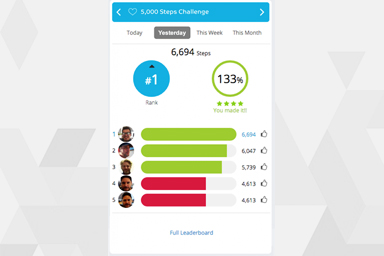
Leaderboard: The purpose of Leaderboard is to show the toppers and the rankings of other players in any domain that has been gamified. The players who are at the top enjoy the fame it apparently brings and those at the bottom always get motivation to play more, score more and dethrone the toppers. The mere presence of leaderboard induces the competitive spirit in any player because they see their peers climbing up so they set a goal to participate more and compete with them. This plays major role in enhancing and boosting user engagement.
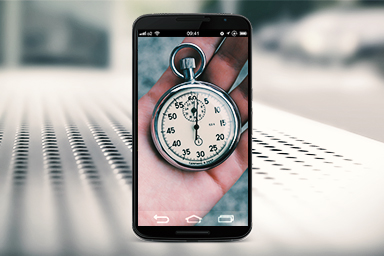
Timer: As self-explanatory as it is, you implement a timer in any screen or in any feature and it automatically places a psychological alert in the user’s brain that they should complete the task or must check out that particular feature before time runs out. You may also send push notifications reminding them the minutes left so that they can engage accordingly. Timers are quite popular in strategy games and the same psyche is applied in general apps so that decision making becomes quick and engagement gets accentuated.
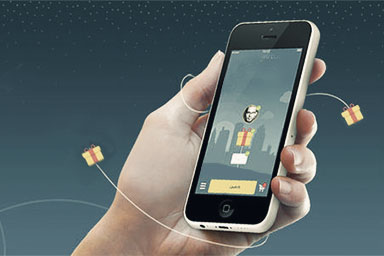
Gift: If there was a way in any app to gift my buddies something that I could or wanted, would I like it? Absolutely. Sending virtual items as gifts can be fun as well as highly engaging. It brings out the creativity in both, the developer/marketer as well as the user. You could be as whacky as you could in creating virtual items and the users could be as creative as they could in using those items in the weirdest and funny ways.
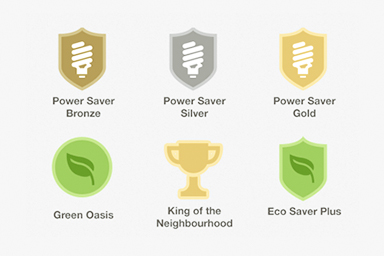
Achievement: Referring to that Einstein badge I mentioned earlier in the post, it is a great way to motivate users to rise up and unlock different badges on each level and show off. Just like the hierarchy in any organization, a hierarchy could be created of badges depending on the type of gamification strategy you are going to implement in your app. It keeps the user at it so that they could keep achieving all the badges continuously.

Rewards: If every time I completed a task, I received some kind of a real or a virtual reward, would it keep me encouraged to engage more so that I could complete more tasks and get more rewards? Without any doubt, yes. It has worked for children, it has worked for anybody who has ever achieved in any field and it will work if you implement it in your app. Rewards will always inspire users to achieve certain levels and these incentives have been known to boost performance of anyone since time immemorial.
If you have control and command of these seven dynamics, you can practically make anyone do anything in your app. The coordination among these dynamics have to be impeccable, though, because they all have to be used simultaneously to work effectively. To sum up, here is how Gamification strategy should be executed:
- Have a clear objective: Don’t integrate game mechanics just because this other successful app/game did it—have a plan, have a goal on what you want to achieve with it—those games and apps are successful because they had a well-thought plan behind their Gamification strategies. The objective can be anything—it could be to boost user engagement or it could be to increase user acquisition or it could also be target conversion
- Strategize well: Objective first, strategy second. Your Gamification strategy should add a good value to your app and should not be felt like a deliberate attempt to force people to share stuff. Users should feel victorious after every reward they get, every leaderboard they top and every achievement they gather. If they are overwhelmed with anything they earn, they will automatically share stuff or even share your app on social platforms to flaunt in front of others
- Seamless Experience: To ensure users have a seamless experience while using your apps, use all the mentioned dynamics in such a way that it does not feel incomplete at any point of time. If a user tops the leaderboard, give them rewards and allow them to share and if somebody unlocks any level, give them an honorary badge. The point is the gamification experience should not be complicated or incomplete. This adds more value to your app/game more than anything.
How to get started?
Very simple—click here to get directed to App42 Cloud APIs for more information on these backend APIs and login to AppHQ management console to begin integration or register to get started from scratch. To know how much gamification will cost you, please check out our updated pricing (quick tip: they are quite cheap and have a good 3 months trial). To learn integration steps on social leaderboard API, buddy management APIs and rest of the other backend APIs, please check out our documentation.
To conclude, Gamification is a sure shot way of boosting user engagement, ensuring that every user becomes a loyal customer and enabling them to become marketers of your app and bringing more users in to join. Start now. Gamify your users.
You may write to us at support@shephertz.com if you want to have a walkthrough of our management console or simply to understand the usage of these backend APIs. We will be happy to hear from you.


















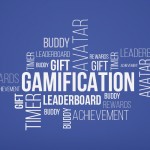
Leave A Reply